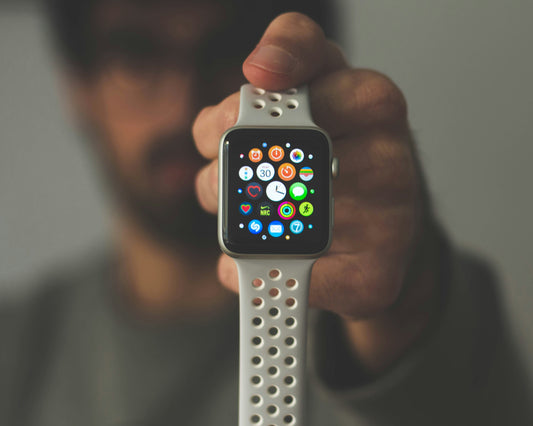Smartwatches and wearable devices have become household essentials, tracking everything from heart rate to sleep quality. But can these everyday gadgets help detect breathing disorders? Emerging research and technology suggest the answer is yes. This article explores how smartwatches monitor respiratory health, the science behind passive breathing data collection, and what the future holds for wearable respiratory diagnostics.
How Do Smartwatches Monitor Breathing?
Modern smartwatches use a combination of sensors to indirectly monitor respiratory parameters:
-
Photoplethysmography (PPG): Measures blood volume changes, which can infer respiratory rate through variations linked to breathing cycles.
-
Accelerometers and Gyroscopes: Detect chest and wrist movements that correlate with breaths.
-
Pulse Oximetry: Measures oxygen saturation (SpO2), indicating how well oxygen is transported in the blood.
-
Acoustic Sensors: Some advanced models capture breathing sounds to identify irregular patterns.
By combining these data streams, smartwatches estimate breathing rate, variability, and even detect pauses that may indicate disorders like sleep apnea.
Evidence Supporting Wearable Respiratory Monitoring
Several studies have validated the use of wearables for respiratory tracking:
-
A 2022 study in NPJ Digital Medicine demonstrated that wrist-worn PPG sensors accurately estimated respiratory rates compared to clinical monitors.
-
Research in Chest journal showed that smartwatch-based oxygen saturation readings correlated strongly with hospital-grade pulse oximeters.
-
Pilot trials have used smartwatch data to screen for obstructive sleep apnea (OSA), a common breathing disorder characterized by interrupted breathing during sleep.
Detecting Breathing Disorders Early
Smartwatches enable continuous, passive monitoring in daily life, providing advantages over traditional spot-checks:
-
Early Warning: Subtle changes in breathing patterns can be flagged before symptoms become obvious.
-
Sleep Monitoring: Detecting abnormal respiratory events during sleep can lead to earlier diagnosis of sleep apnea or nocturnal hypoventilation.
- Chronic Disease Management: Patients with asthma, COPD, or heart failure can track respiratory status and identify exacerbations sooner.
Limitations and Challenges
While promising, wearable respiratory monitoring has limitations:
-
Accuracy Variability: Movement artifacts and sensor placement affect data quality.
-
Not Diagnostic Alone: Smartwatches provide screening data but can’t replace clinical evaluation and formal testing like polysomnography or spirometry.
- Data Privacy: Continuous health monitoring raises concerns about sensitive data security.
The Future of Wearable Respiratory Tech
Advances in sensor technology, machine learning, and AI will further enhance smartwatches’ ability to detect and predict respiratory disorders. Features on the horizon include:
-
Integration with smartphone apps to provide personalized respiratory coaching.
-
Alerts for users to seek medical evaluation when abnormal patterns arise.
-
Continuous oxygen saturation trending to detect silent hypoxia, especially important in diseases like COVID-19.
- Combined use with other health metrics (heart rate variability, sleep stages) to provide holistic respiratory health insights.
What This Means for You
If you own a smartwatch or wearable device, it may soon become an essential tool for respiratory health. While it’s not a replacement for professional medical advice, passive respiratory monitoring offers new possibilities for early detection, self-awareness, and better management of lung conditions.
Conclusion
Smartwatches are evolving from fitness trackers to potential respiratory health monitors, capable of detecting early signs of breathing disorders. As technology advances, these wearable devices could revolutionize how we monitor, manage, and understand respiratory health in everyday life.
Resources
-
NPJ Digital Medicine: www.nature.com/npjdigitalmed
-
American Thoracic Society: www.thoracic.org
-
Sleep Foundation: www.sleepfoundation.org




